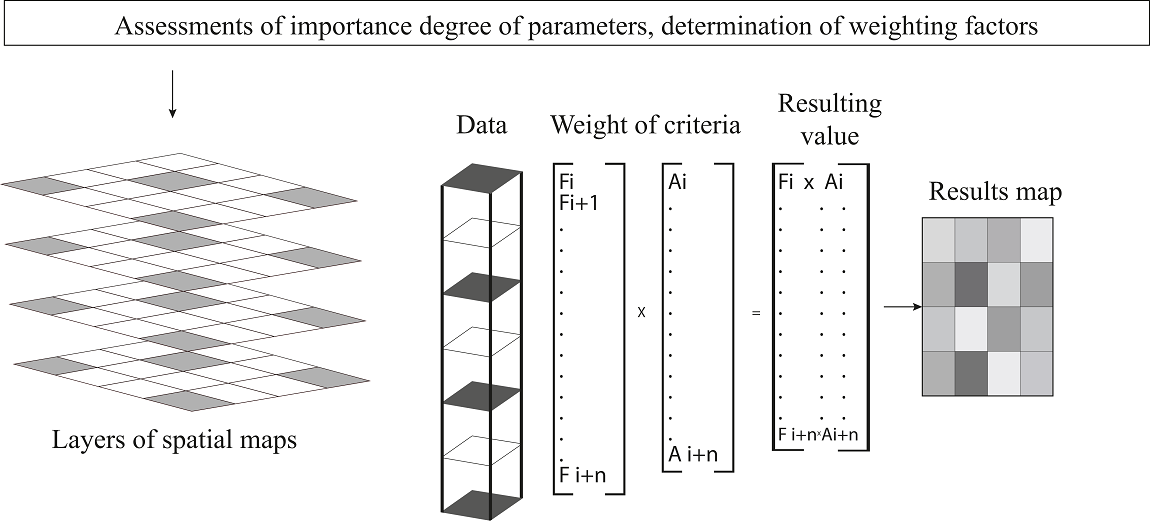Identifying the risks of armed conflict impact on the ecosystem
DOI:
https://doi.org/10.15587/1729-4061.2024.298430Keywords:
military conflict, risks, sustainability, ecosystem, mathematical model, material flows, geoinformation systemsAbstract
The object of the study is the territory that became the object of the influence of hostilities. The study is dedicated to finding ways to assess the state of ecosystems and ensure their stability in the conditions of military conflicts.
The impact of military conflict on the environment is highlighted through the analysis of risks and losses in ecosystems.
It has been studied that the intensity of armed conflicts determines the scale and degree of damage to ecosystems, and the use of destructive weapons leads to the direct destruction of natural environments and their components.
It has been determined by an expert survey that the most significant changes in natural ecosystems are the biodiversity losses, deforestation, territorial changes and the destruction of natural objects (scores ≥9.0). Factors of low impact (score <6.75) are air pollution, erosion due to air pollution, biodiversity losses due to water pollution.
The interrelationships between military actions and environmental pollution are studied for the importance of understanding these processes for effective management of environmental security during military conflicts.
A mathematical and graphic model of material flows has been developed, which allows taking into account resource flows, pollution and losses in the ecosystem during armed conflicts.
The model, tested in the Kyiv region, made it possible to determine the priorities of conservation and risk management. Analysis of 9,000 km2 revealed contaminated areas, in particular, in the southwestern and western directions.
The practical use of the research results is in the development of strategies for minimizing and restoring the ecological consequences of armed conflicts. This can help improve the management of natural resources in the context of military operations and increase the resilience of ecosystems
References
- Wenning, R. J., Tomasi, T. D. (2023). Using US Natural Resource Damage Assessment to understand the environmental consequences of the war in Ukraine. Integrated Environmental Assessment and Management, 19 (2), 366–375. https://doi.org/10.1002/ieam.4716
- Hanson, T. (2018). Biodiversity conservation and armed conflict: a warfare ecology perspective. Annals of the New York Academy of Sciences, 1429 (1), 50–65. https://doi.org/10.1111/nyas.13689
- Gardashuk, T. (2022). Environmental Threats of War in Ukraine. Envigogika, 17 (1). https://doi.org/10.14712/18023061.639
- Sasmoko, Imran, M., Khan, S., Khan, H. ur R., Jambari, H., Musah, M. B., Zaman, K. (2023). War psychology: The global carbon emissions impact of the Ukraine-Russia conflict. Frontiers in Environmental Science, 11. https://doi.org/10.3389/fenvs.2023.1065301
- Mobaied, S., Rudant, J.-P. (2019). New method for environmental monitoring in armed conflict zones: a case study of Syria. Environmental Monitoring and Assessment, 191 (11). https://doi.org/10.1007/s10661-019-7805-5
- Almohamad, H. (2020). Impact of Land Cover Change Due to Armed Conflicts on Soil Erosion in the Basin of the Northern Al-Kabeer River in Syria Using the RUSLE Model. Water, 12 (12), 3323. https://doi.org/10.3390/w12123323
- Qayyum, U., Anjum, S., Samina Sabir (2021). Armed conflict, militarization and ecological footprint: Empirical evidence from South Asia. Journal of Cleaner Production, 281, 125299. https://doi.org/10.1016/j.jclepro.2020.125299
- Aung, T. S. (2021). Satellite analysis of the environmental impacts of armed-conflict in Rakhine, Myanmar. Science of The Total Environment, 781, 146758. https://doi.org/10.1016/j.scitotenv.2021.146758
- Ma, Y., Lyu, D., Sun, K., Li, S., Zhu, B., Zhao, R. et al. (2022). Spatiotemporal Analysis and War Impact Assessment of Agricultural Land in Ukraine Using RS and GIS Technology. Land, 11 (10), 1810. https://doi.org/10.3390/land11101810
- Mohamed, M., Anders, J., Schneider, C. (2020). Monitoring of Changes in Land Use/Land Cover in Syria from 2010 to 2018 Using Multitemporal Landsat Imagery and GIS. Land, 9 (7), 226. https://doi.org/10.3390/land9070226

Downloads
Published
How to Cite
Issue
Section
License
Copyright (c) 2024 Iryna Kyrpychova, Kateryna Berezenko, Olena Bordiuhova, Serhii Skakovskyi, Nadiia Sopova, Yuliia Chupryna, Serhii Liubytskyi, Bohdana Komarysta, Vladyslav Bendiuh, Oleksandr Nosyriev

This work is licensed under a Creative Commons Attribution 4.0 International License.
The consolidation and conditions for the transfer of copyright (identification of authorship) is carried out in the License Agreement. In particular, the authors reserve the right to the authorship of their manuscript and transfer the first publication of this work to the journal under the terms of the Creative Commons CC BY license. At the same time, they have the right to conclude on their own additional agreements concerning the non-exclusive distribution of the work in the form in which it was published by this journal, but provided that the link to the first publication of the article in this journal is preserved.
A license agreement is a document in which the author warrants that he/she owns all copyright for the work (manuscript, article, etc.).
The authors, signing the License Agreement with TECHNOLOGY CENTER PC, have all rights to the further use of their work, provided that they link to our edition in which the work was published.
According to the terms of the License Agreement, the Publisher TECHNOLOGY CENTER PC does not take away your copyrights and receives permission from the authors to use and dissemination of the publication through the world's scientific resources (own electronic resources, scientometric databases, repositories, libraries, etc.).
In the absence of a signed License Agreement or in the absence of this agreement of identifiers allowing to identify the identity of the author, the editors have no right to work with the manuscript.
It is important to remember that there is another type of agreement between authors and publishers – when copyright is transferred from the authors to the publisher. In this case, the authors lose ownership of their work and may not use it in any way.









